Piplined protocols #
Go-back-n #
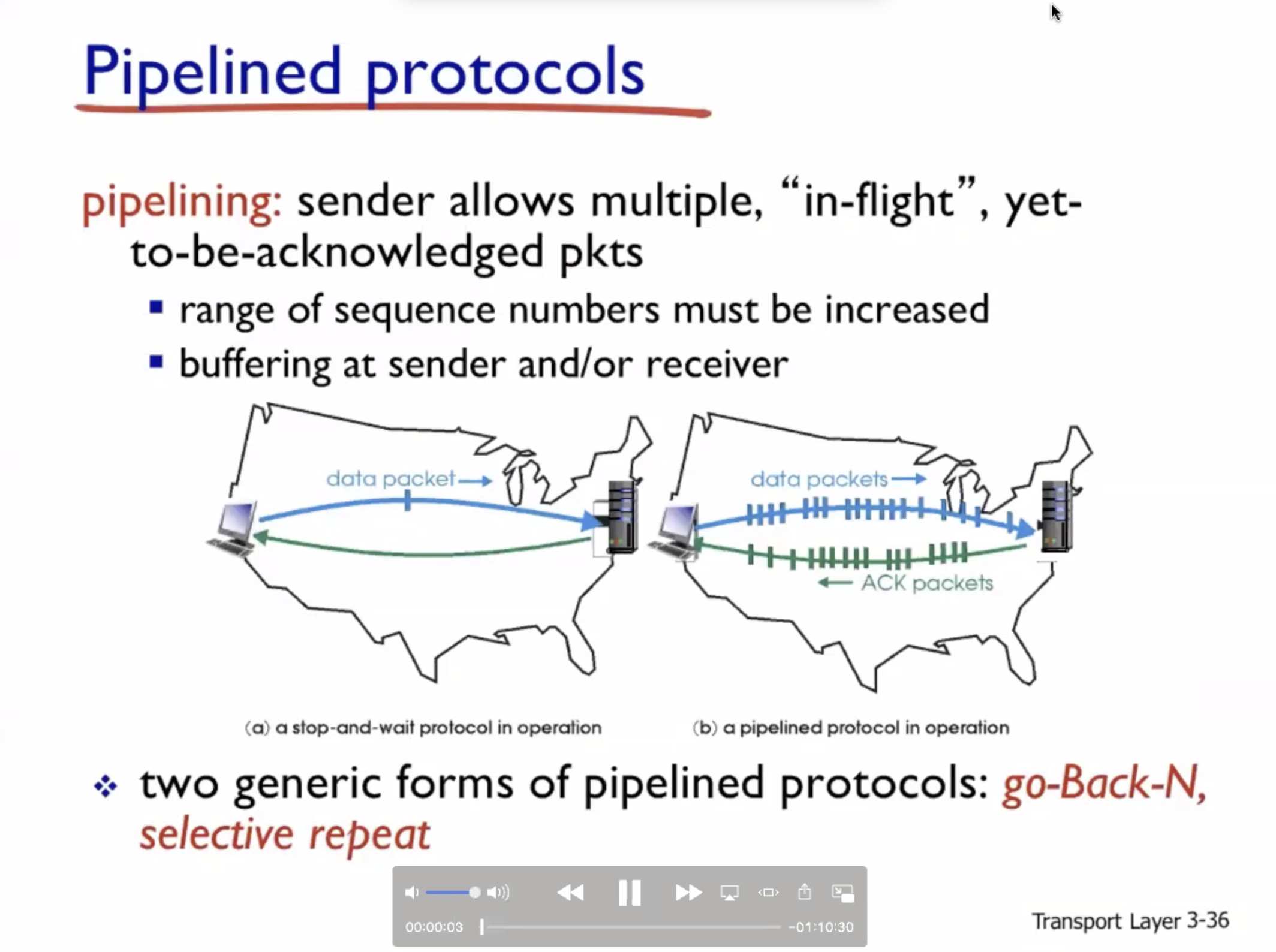
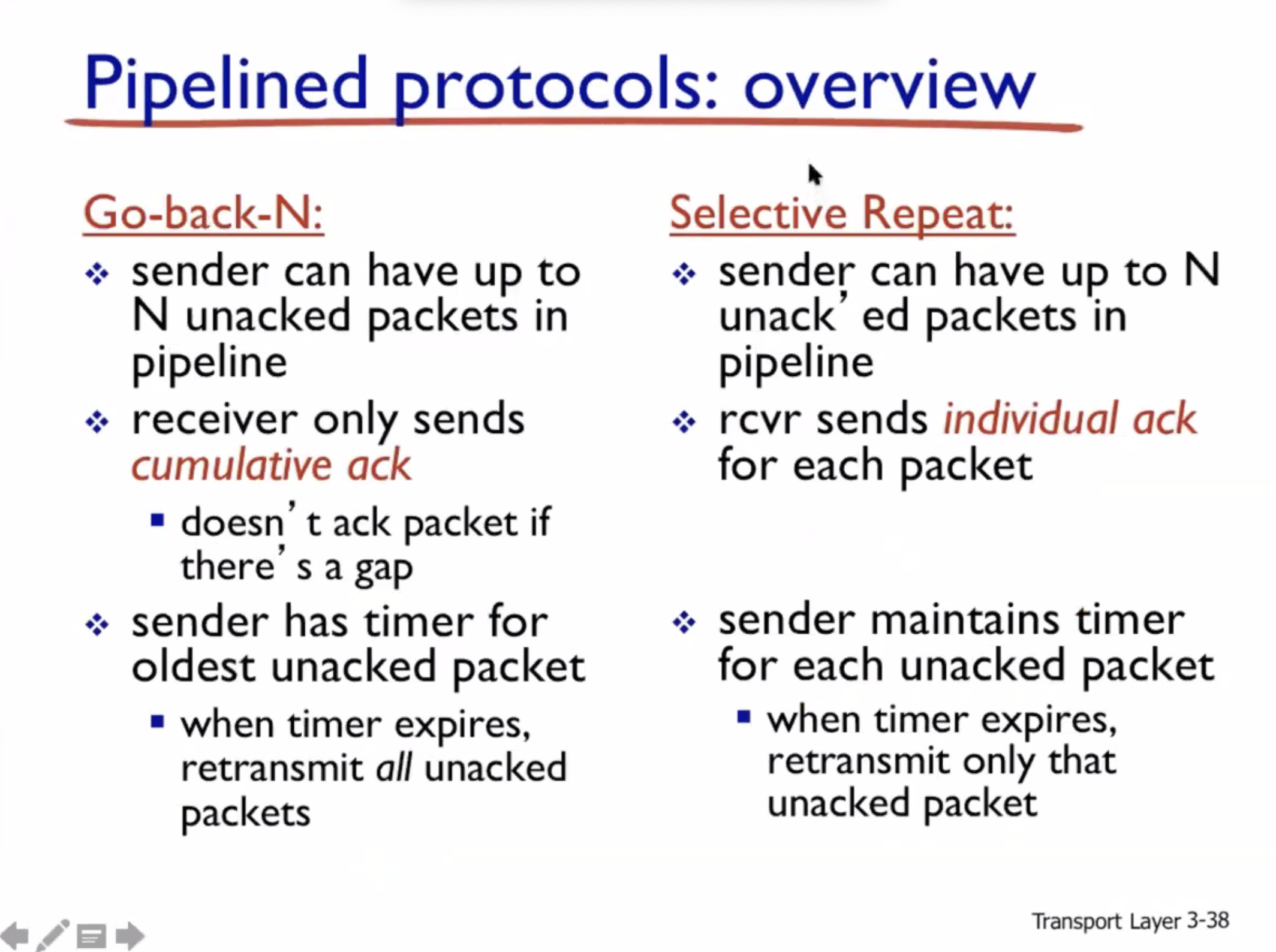
unacked = unacknowledged = no ACK response, not confirmed for success yet.
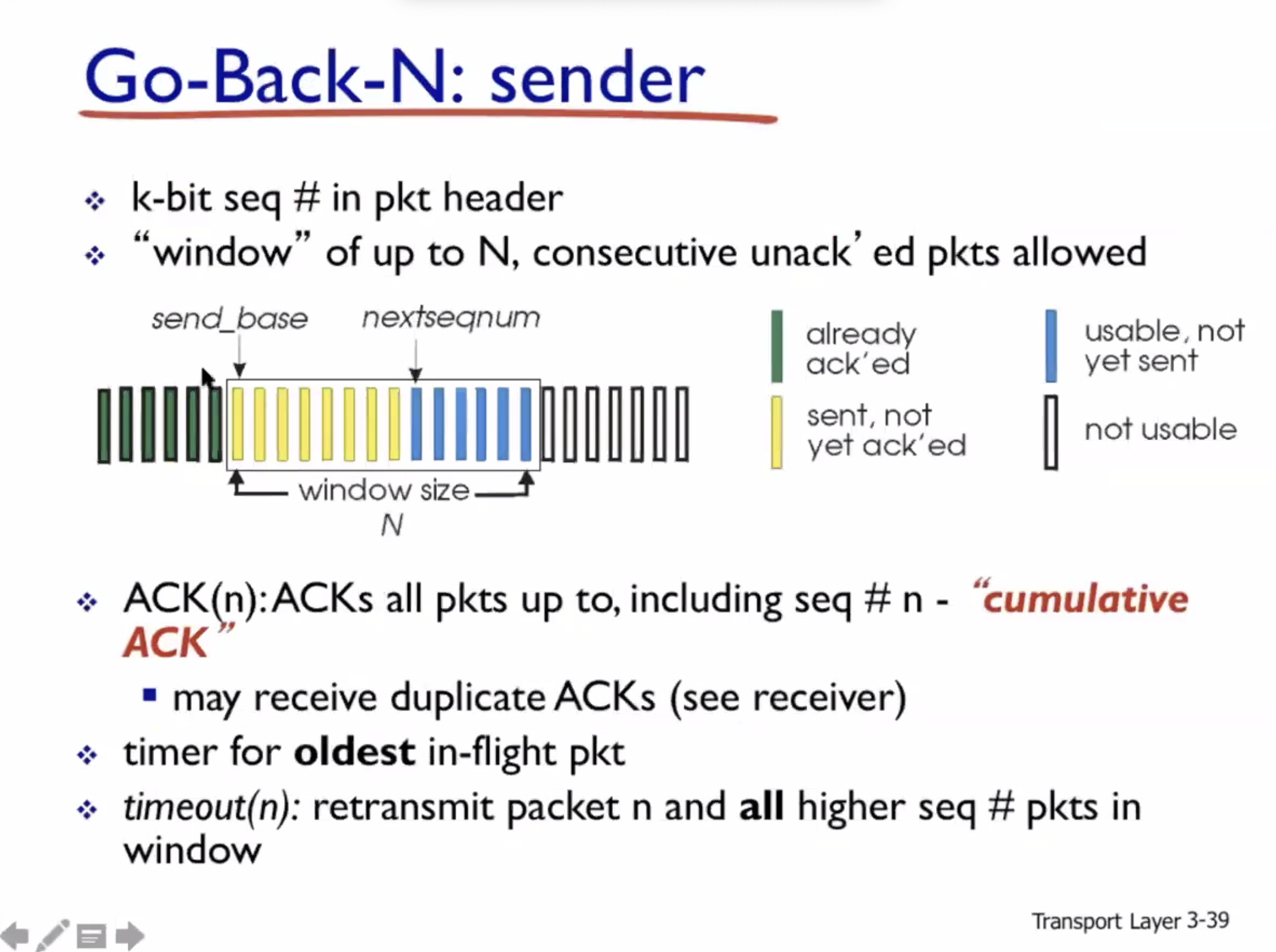
The number of bits needed for a \( k \) -bit sequence numbers is \( 2^k - 1 \) . The window size is \( N = 2^k \) .
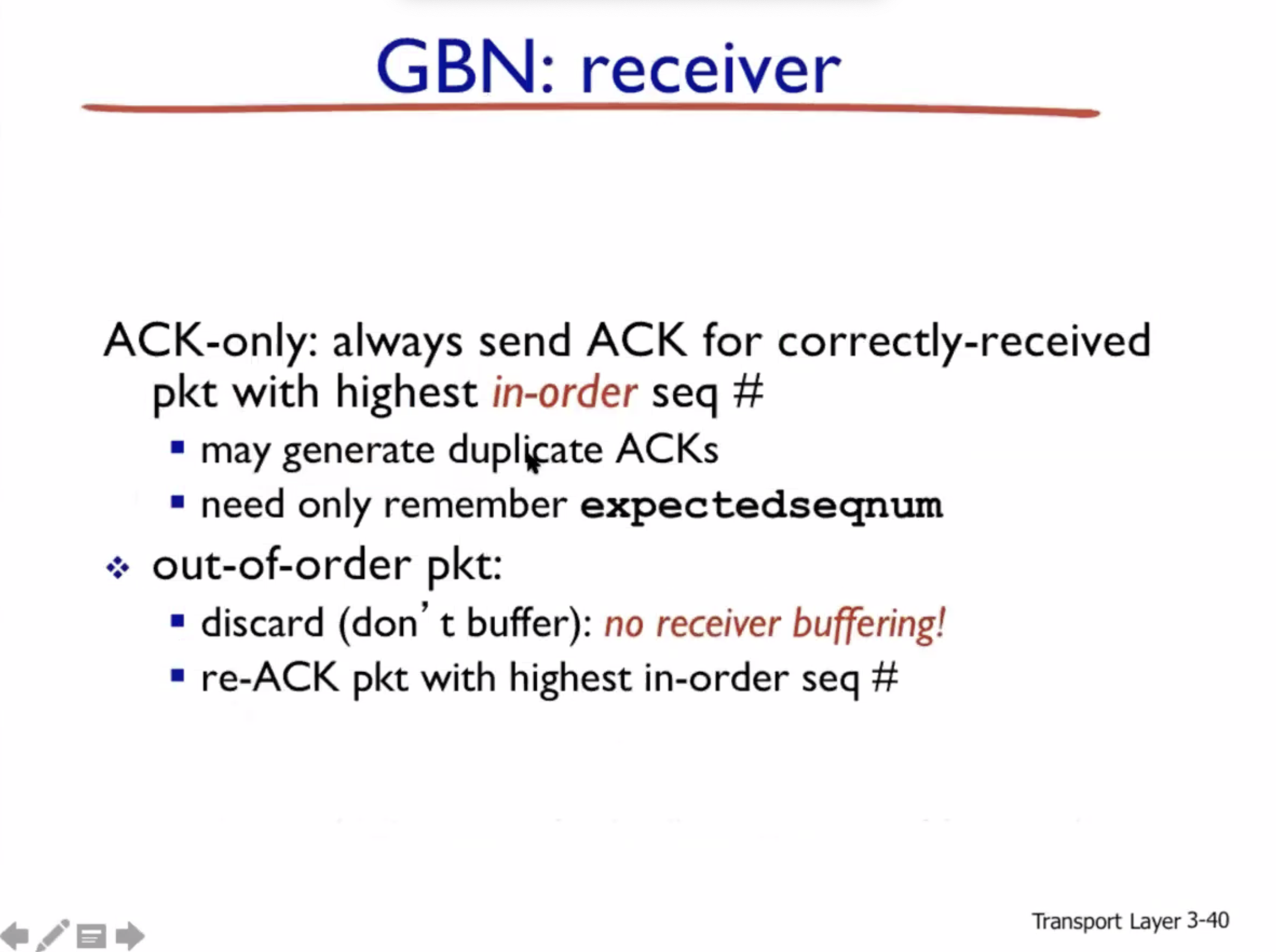
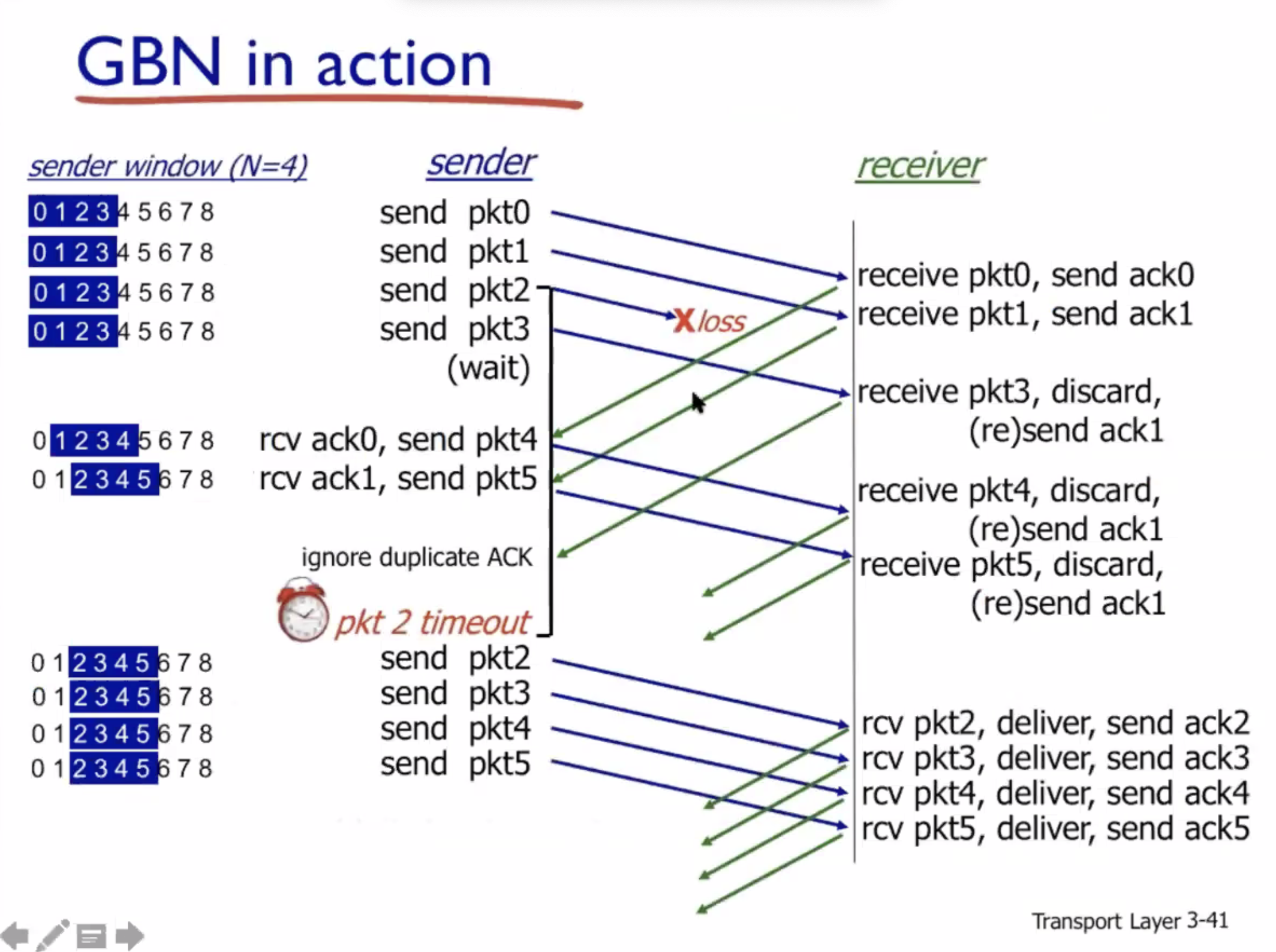
The packet number that can be used for cumulative ack should be the largest number before any gap.
- Send window size \( N \) : it can send up to \( N \) packets on the fly
- Cumulative ACK ( \( m \) ): means that packet \( m \) and also every packet before \( m \) are all received successfully
- Timer: only a single timer, bound to the oldest packet unacked. When timeout, resend all packets in the sender window.
- On receiver side, all packets after the gap are called “out of order”, and they are discarded. Hence, there can only be one gap.
Selective repeat #
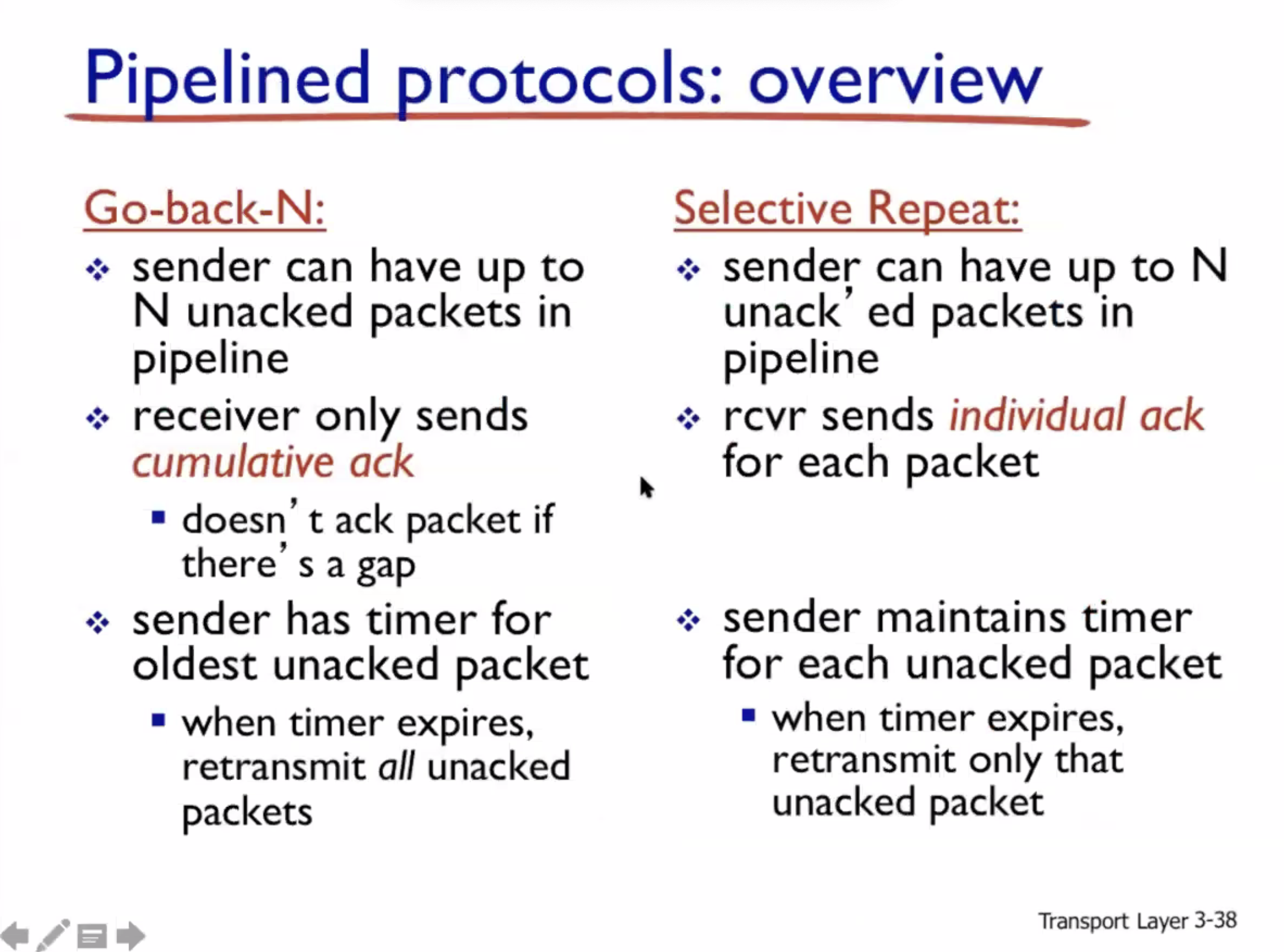
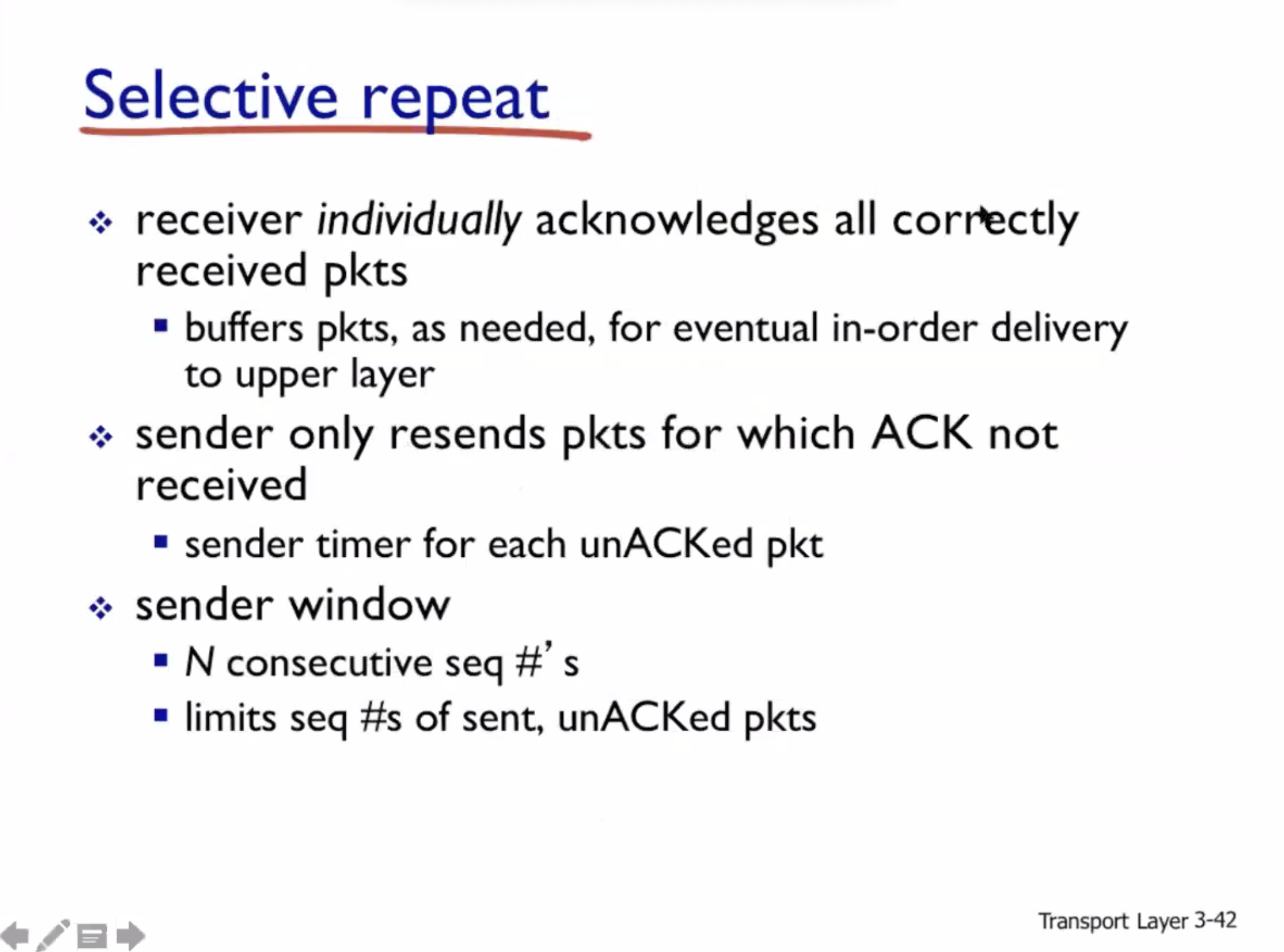
For selective repeat, there is still \( k \) -bit sequence numbers, and a window size of \( N = 2^{k - 1} \) . The largest number is \( 2^{k - 1} - 1 \) .
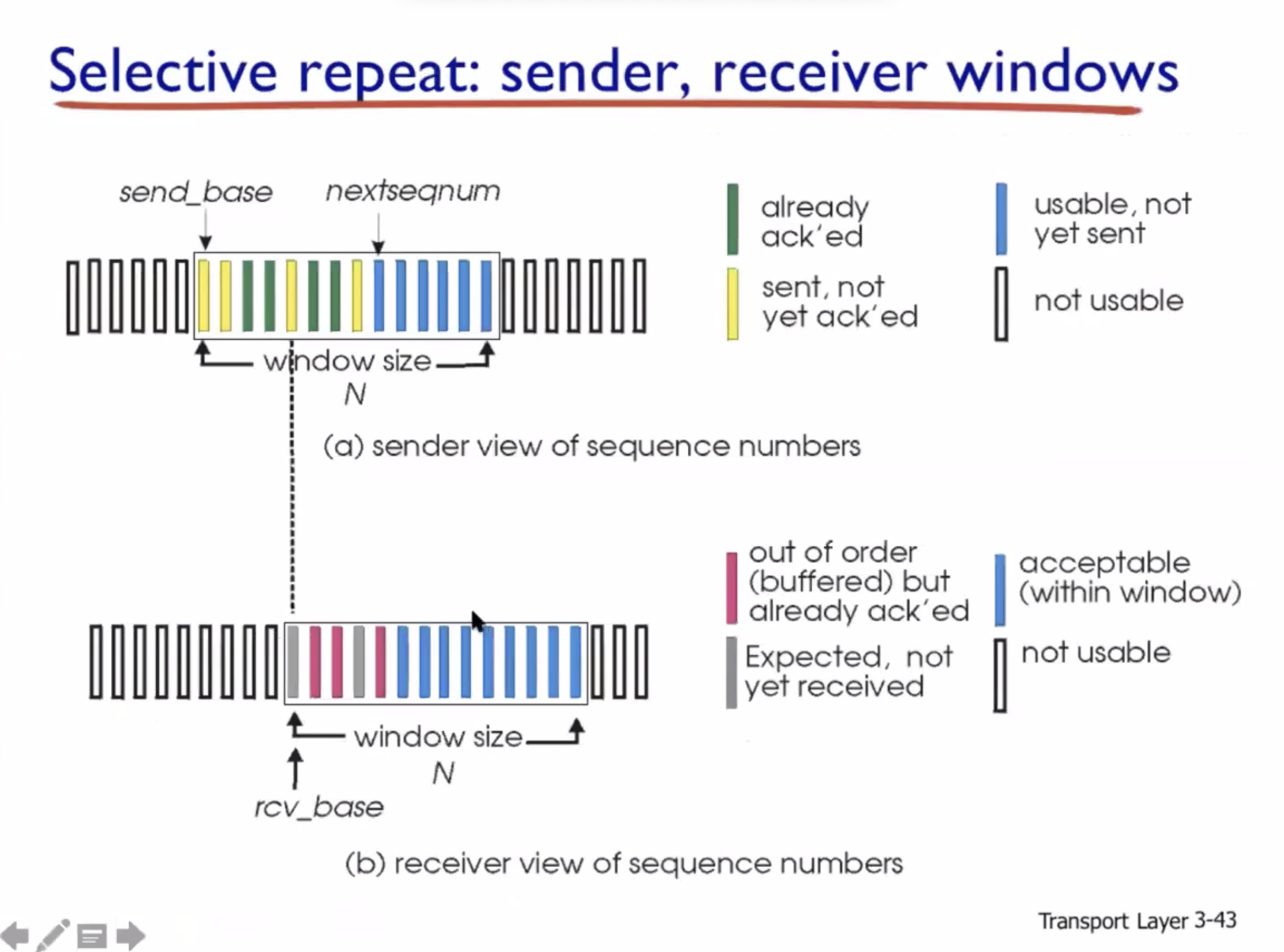
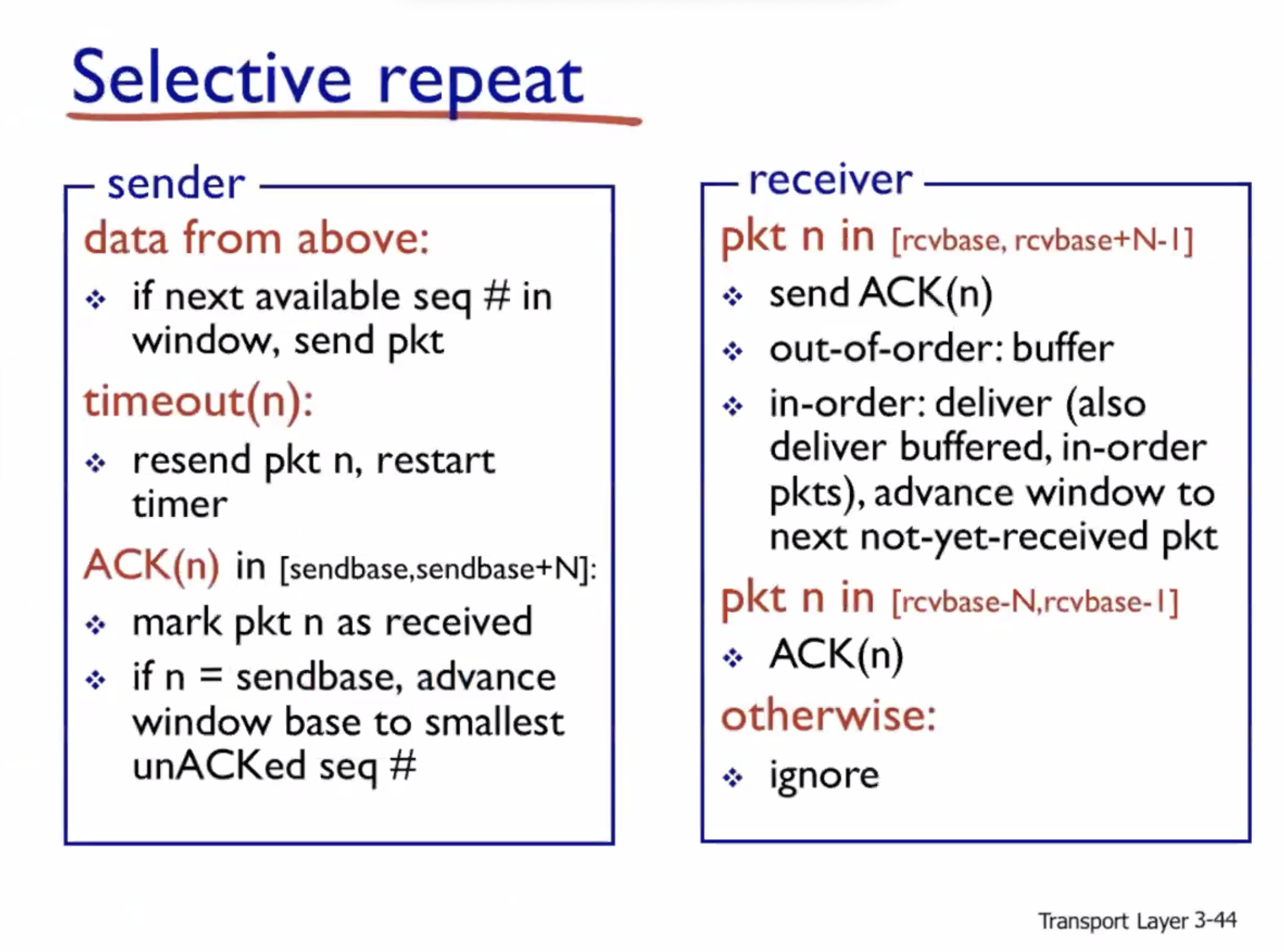
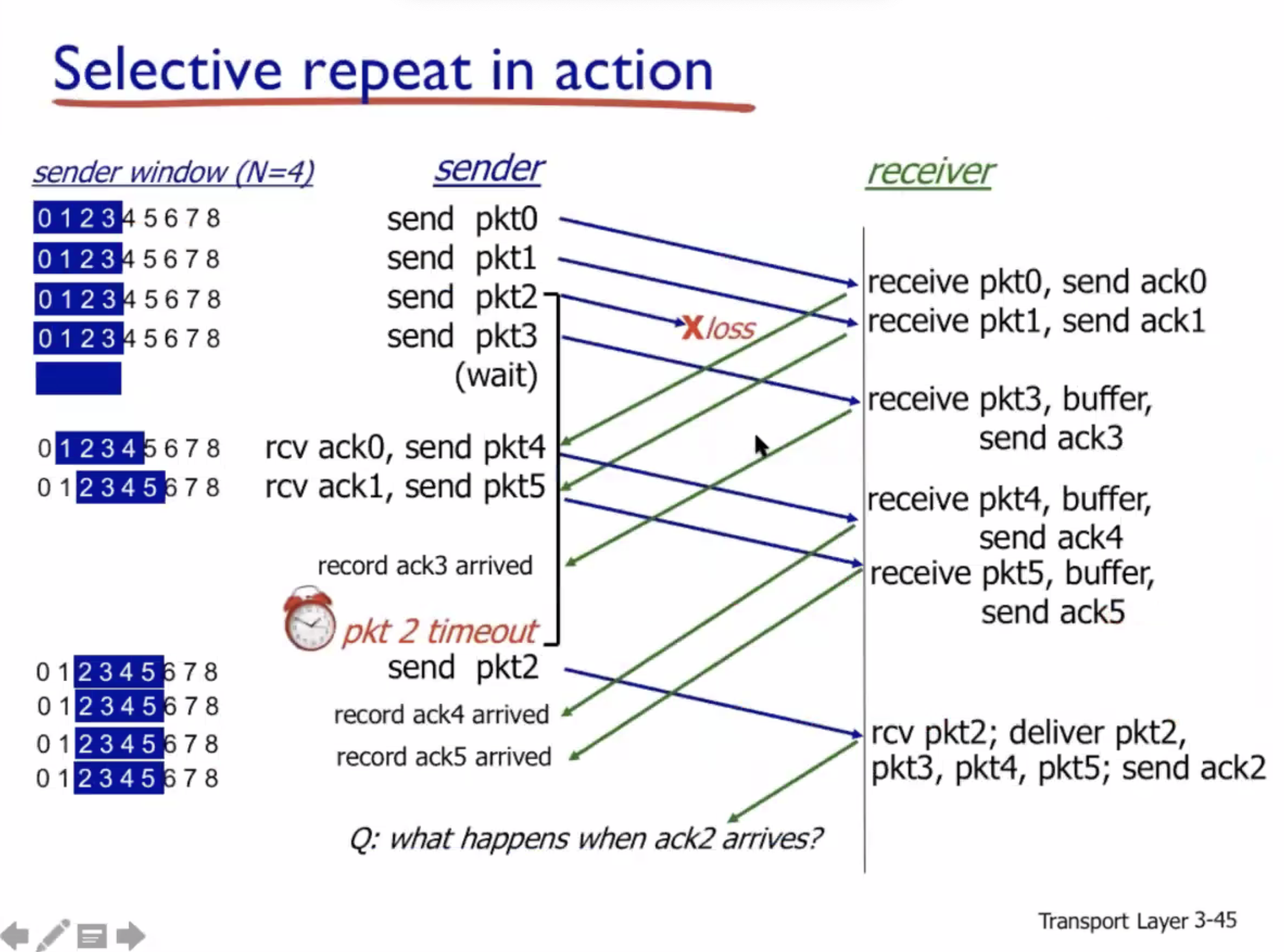
- Send up to \( N \) packets: controlled by sender window size \( N \) .
- Individual ACK: the particular packet received successfully.
- Timer: there is one timer for each unacked packet. When timeout happens, the sender only resends the particular packet.
- On receiver side: packets after gap are called “out of order”, but this time they are buffered, waiting to be delivered.
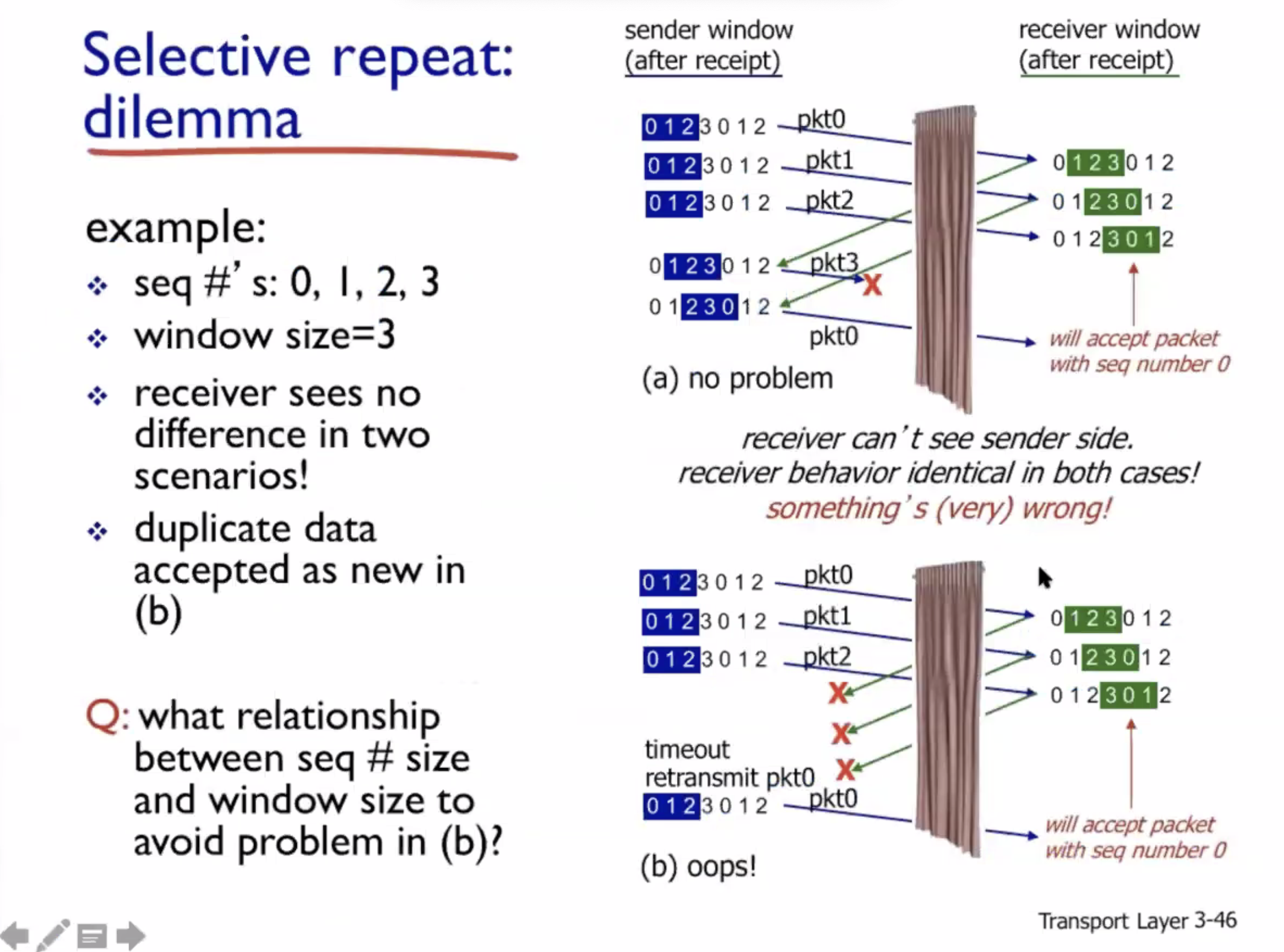
So to combat this, if \( k = 2 \) , then the size of the window should be \( N = 2^{2-1} = 2 \) . The largest sequence number is \( 2^{1 - 1} = 1 \) .